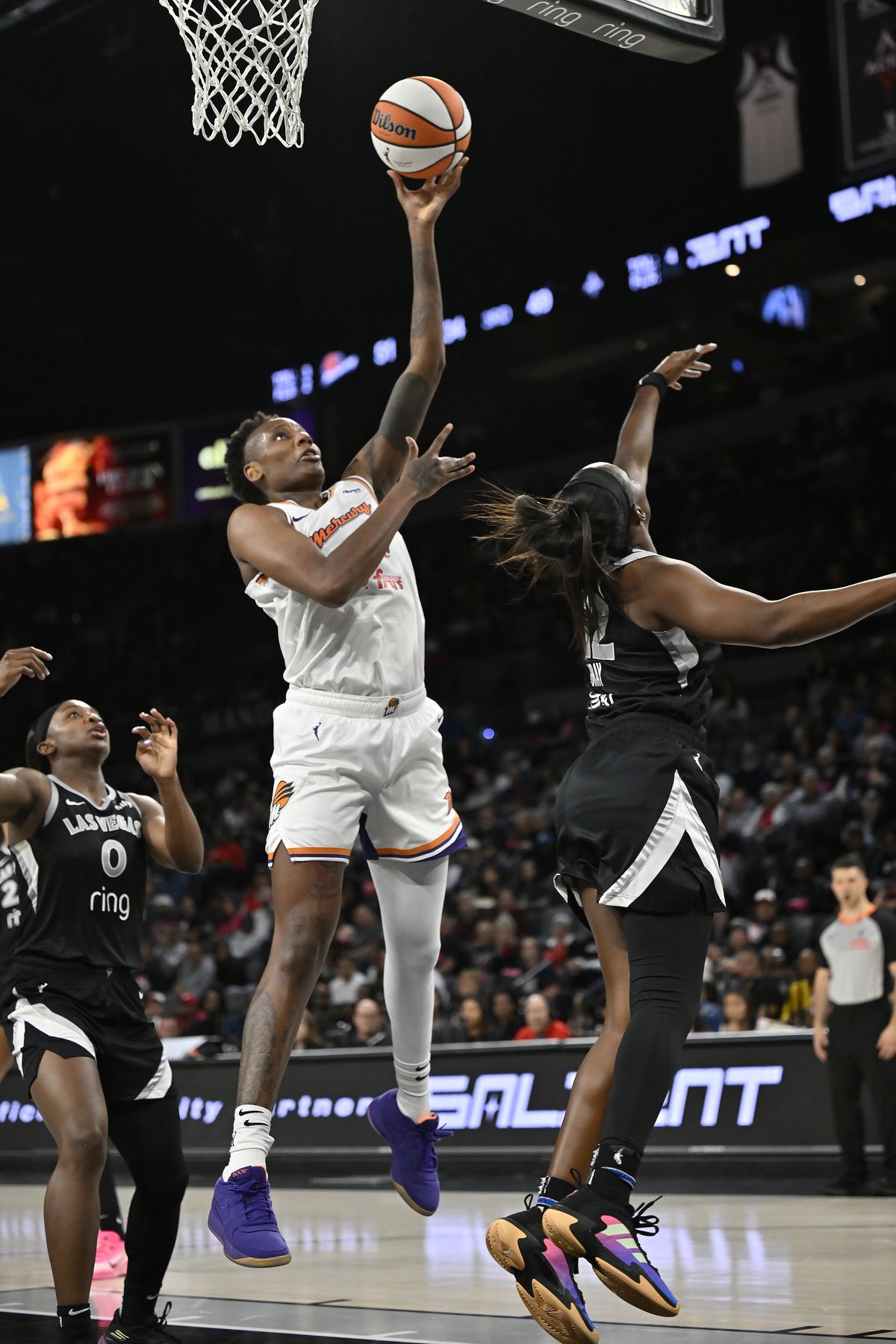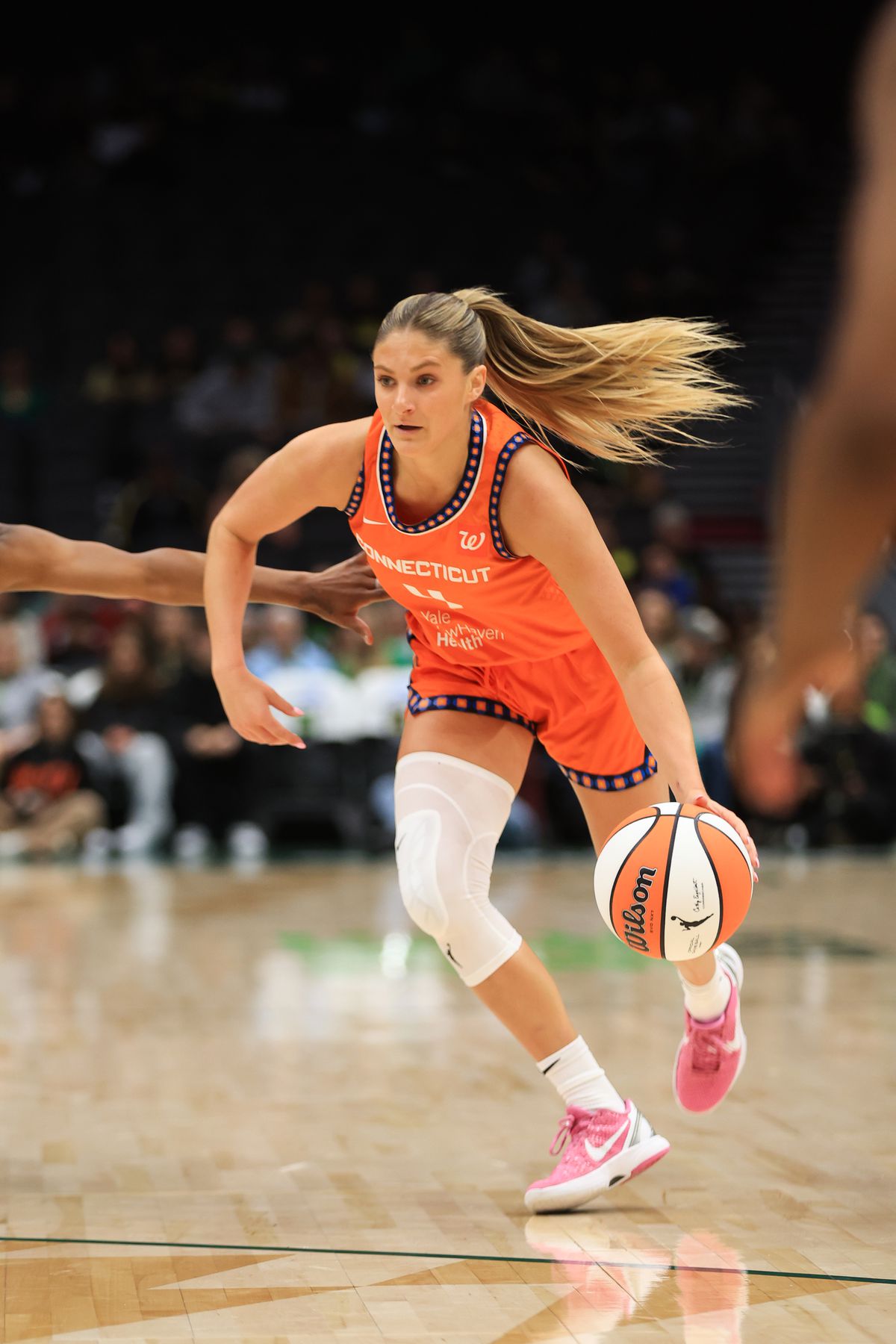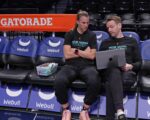What exactly makes a WNBA player worthy of winning the Most Improved Player award?
It’s something that the league’s award voters often disagree on. Whereas the WNBA’s other major awards like Most Valuable Player, Rookie of the Year and Defensive Player of the Year have at least some unwritten criteria, “improvement” seems to be more subjective. There’s no clear way to measure it, and yet every year there are several players who show significant growth in their own ways.
In the past, the Most Improved Player award has typically gone to players whose statistical production increased from the previous season, whether it be in points per game, field goal percentage or some other category. This can often be attributed to a change in that player’s role or environment—or, of course, the hard work they’ve put in to get better.
With so many factors to consider, it’s hard to predict who will be in the running for Most Improved Player in 2025. That being said, here are a few players who, if things go right for them, could be strong candidates.
Jacy Sheldon (Connecticut Sun)
Sheldon will get a fresh start in Connecticut after an up-and-down rookie season in Dallas. The combo guard appeared in all 40 games as a rookie and played 23.3 minutes per game, but was not a staple of the Wings’ offense, averaging 5.4 points and 2.5 assists on a team featuring Arike Ogunbowale, Satou Sabally, Natasha Howard, Odyssey Sims and other established veterans.
Things will be much different in Connecticut, and Sheldon is poised to take advantage of a volatile situation. Included in the four-team, 13-player trade that dealt Alyssa Thomas to Phoenix and officially began a rebuilding period for the Sun, Sheldon should be seen as one of the foundational pieces of that rebuild. Even if she begins the 2025 season coming off the bench, there should be many more on-ball reps in store for Sheldon, and if the Sun end up changing their mind on Marina Mabrey’s trade request and send her elsewhere, Sheldon will have the opportunity to put up plenty of shots for a Connecticut team that currently lacks a clear identity.
Natasha Mack (Phoenix Mercury)

The loss of franchise legend Brittney Griner in free agency left a gaping hole in the Mercury’s frontcourt, and while no one player should be expected to replace Griner’s individual brilliance in the post, Mack will now have the opportunity to showcase her own strengths after serving as Griner’s backup in 2024.
With Alyssa Thomas and Satou Sabally joining Kahleah Copper as the Mercury’s new set of go-to players, the emphasis for Phoenix will likely be on pace of play and smaller lineups. Mack won’t get a huge workload, but she will have the benefit of playing in a more uptempo system that suits her; the ability of forwards Thomas and Sabally to rebound, push the ball and find teammates in transition seems perfect for an athletic rim-runner like Mack, who totaled 19 points and 10 rebounds in two preseason games. Last year, Mack averaged five rebounds and 1.2 blocks in just 15.5 minutes per game; she’ll certainly play more frequently than that in 2025, and there will be plenty of room for her scoring (3.8 points per game in 2024) to improve as she slots in next to the Mercury’s new offensive weapons.
Kamilla Cardoso (Chicago Sky)

Unlike Sheldon or Mack, Cardoso already had a sizable role in 2024. Initially hampered by a shoulder injury, Cardoso’s rookie campaign got off to a slow start, but she took over as the Sky’s starting center when Elizabeth Williams tore her meniscus in June and finished the season averaging 9.8 points, 7.4 rebounds and 1.4 blocks in 27.4 minutes played per game. This earned Cardoso a spot on the WNBA’s All-Rookie Team, along with Sky teammate Angel Reese.
Still, one can’t help but feel Cardoso is capable of so much more. At 6-foot-7, there are few players in the WNBA who are taller, and she has the skill and patience to operate as a true low-post hub, which should be far easier on a Sky roster that has much more 3-point shooting than it did a year ago. The addition of veteran point guard Courtney Vandersloot should also help Cardoso get more quality looks around the basket than she did last season, which will ideally translate to a higher field goal percentage than what she posted as a rookie (52.1 percent).
Finally, it should be noted that as Cardoso got more comfortable during her rookie season, her production increased significantly. She averaged 12 points (59.1 percent shooting), 8.1 rebounds and 1.9 blocks per game in August and September; if she can match or even improve upon those numbers in 2025, she’ll likely be a candidate to win Most Improved Player.

